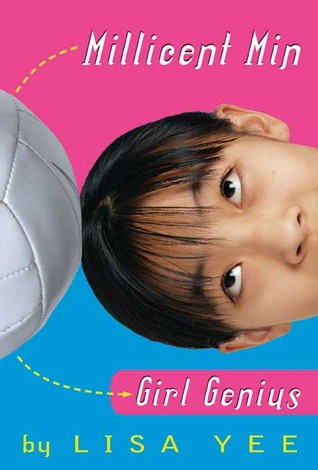 This book is a clever companion book to Millicent Min, Girl Genius. It covers the same time period as Millicent Min, and sometimes the exact same events, only the story is told from Stanford Wong's perspective.
This book is a clever companion book to Millicent Min, Girl Genius. It covers the same time period as Millicent Min, and sometimes the exact same events, only the story is told from Stanford Wong's perspective.
I was impressed that this book is more than just the same story from a different angle. While I pegged Millicent Min for audiences as young as "upper elementary grades", this book I would put solidly in the middle school grades. Stanford's life is somewhat more complex than Millicent's. Not only is he struggling to pass summer school English, but he's hiding his summer school from his closest friends, he has a strained relationship with his parents, he has an aging grandparent who is slowly losing her mental faculties, and he likes a girl. (The book mentions "hickeys" and "second base", both in a vague manner showing that Stanford himself doesn't quite understand what those words mean.)
From a multicultural point of view, I liked that this book was about a Chinese-American boy, but while his Chinese-American-ness was central to his character, it was also clear that Stanford was just another American kid trying to make his way through adolescence. On the one hand, this book is about a kid who just happens to be Chinese-American; the main plot is that Stanford loves basketball, but has failed English, so he needs to go to summer school. I imagine he's relatable to many young readers, and he's non-stereotypical because he doesn't fit the model minority mold. On the other hand, Stanford does have a tiger dad, and his family's dynamics were a pretty realistic portrayal of a Chinese-American family. Plus, Chinese culture makes regular appearances, mostly in the way Stanford's grandmother likes to make dim sum.
A couple things led me to rate this book just shy of 5 stars. First, for much of the book, it really bothered me that Stanford lied so easily. While he eventually comes clean with all the big lies, I'm not sure he ever had any kind of realization that all the little lies along the way were detrimental, too, like in the way they hindered his ability to communicate meaningfully with his parents.
Also, I didn't feel like I got enough closure with Digger. He's only a supporting character, but he was fleshed out enough that we know he acts out partly - or mostly - because he does not have a supportive home life. He is not a one-dimensional bully - we see his vulnerability a couple times - and yet there is no indication that he might change for the better after we leave the characters to their imagined futures. Too bad there isn't a book from HIS perspective!




